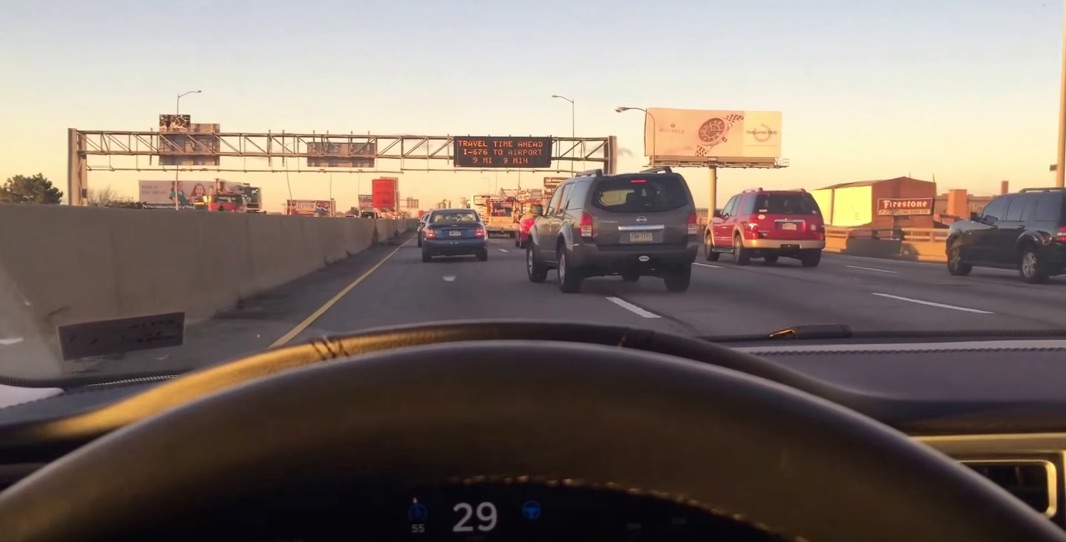There is at least one very personal setting involved in the use of Tesla’s Traffic Aware Cruise Control (TACC), and that is the distance tolerance level. It applies to both TACC only and TACC with Autosteer, also referred to as Autopilot.
These levels range from 1 to 7 where 1 is the shortest following distance and 7 is the most. If you are interested in driving conservatively you can choose level 7. Whichever you choose, your setting will automatically remain for the next time you activate, with a quick flash showing the level upon activation.
Per the owner’s manual:
To adjust the distance you want to maintain between Model S and a vehicle traveling ahead of you, rotate the cruise control lever to choose a setting from 1 (the closest following distance) to 7 (the longest following distance). Each setting corresponds to a time-based distance that represents how long it takes for Model S, from its current location, to reach the location of the rear bumper of the vehicle ahead.
I happen to find driving with the most conservative level 7 to be perfect in most situations. That is the default on my car and I rarely ever change it. The downside, of course, is that at certain speeds the space is large and begs for others to cut in ahead of you. For that reason, I do recall making the setting much lower on a trip to New England where an accident delayed one leg of our trip and traffic was extremely slow and full of impatient drivers. But just as Tesla claimed even before Autopilot functionality was released, heavy traffic situations are where the feature really excels.
Here is a 1-minute video illustrating my how the car handles certain situations when Autopilot is engaged and the distance tolerance is set to 7.
In the first part of the clip, the car smoothly goes from highway speeds to nearly stopped. Next, it shows slow traffic that comes to a complete stop. Finally, it shows the following distance at moderate speeds and how the space is in fact large enough to encourage adjacent cars to switch lanes ahead of you. In contrast from the very first release of TACC, the car slows smoothly. In my experience with early TACC, the stop was noticeably more abrupt and quite unnatural compared to how a human would have manually slowed the car. Now, it’s nearly indistinguishable to a passenger whether the driver is driving themselves or TACC/Autopilot is in use.
Of course, driving with Autopilot on an open road is fun too. Living in the city the open road isn’t something I get to see often. But once in a while, I visit that state to the east and bump tunes while cruising at highway speeds.











